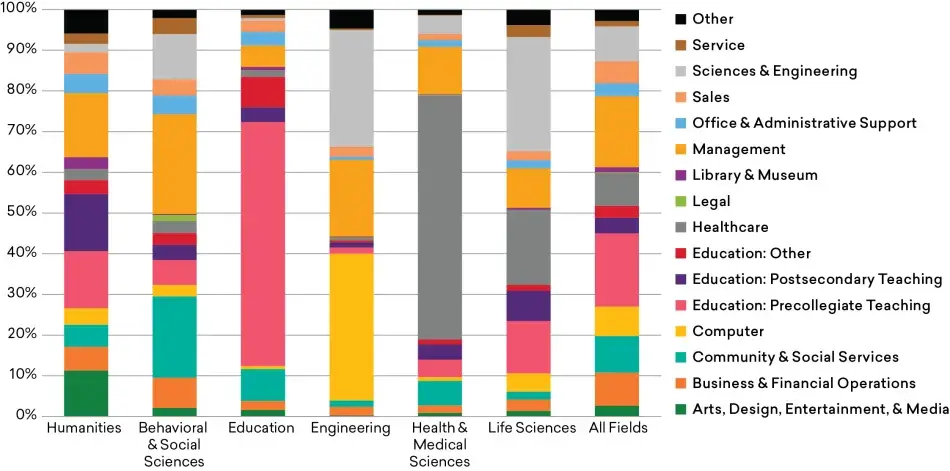Occupational Distribution of Terminal Master’s Degree Holders, by Field of Degree, 2019
Occupational Distribution of Terminal Master’s Degree Holders, by Field of Degree, 2019

Holders of a humanities master’s degree were more evenly distributed across occupational sectors than recipients of a degree in other major academic fields. At the same time, recipients of humanities master’s degrees were particularly likely to be found in teaching jobs. Over 14% of humanities master’s degree recipients were employed as postsecondary teachers, compared to less than 4% of master’s degree recipients generally. Another 14% of humanities graduates were employed in precollegiate teaching, a larger share than every other field except education. Outside of teaching, the largest share of humanities master’s degree recipients was found in management positions (16%), a share similar to that among master’s degree recipients generally (18%).15
Men’s and women’s occupational distributions were quite similar. Women with a master’s degree in the humanities were modestly more likely than men to be found in arts/design jobs and office/administrative support jobs, while men were somewhat more likely than women to work in computer and management jobs.